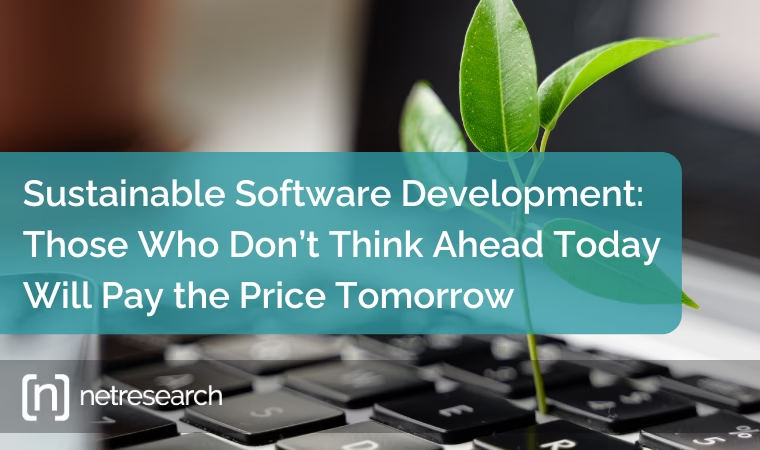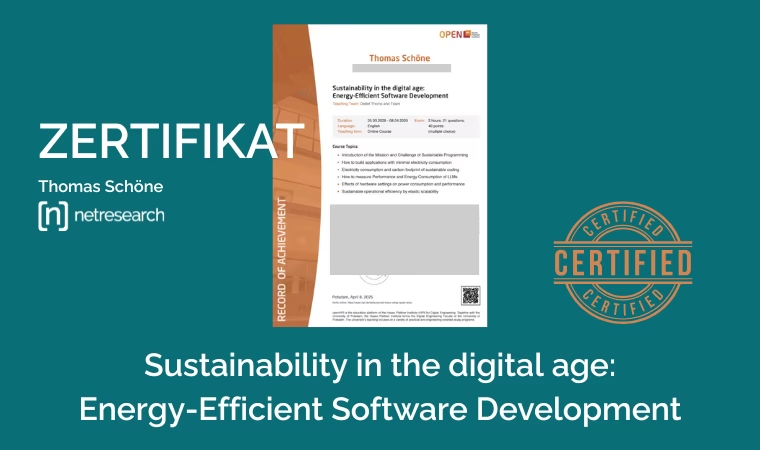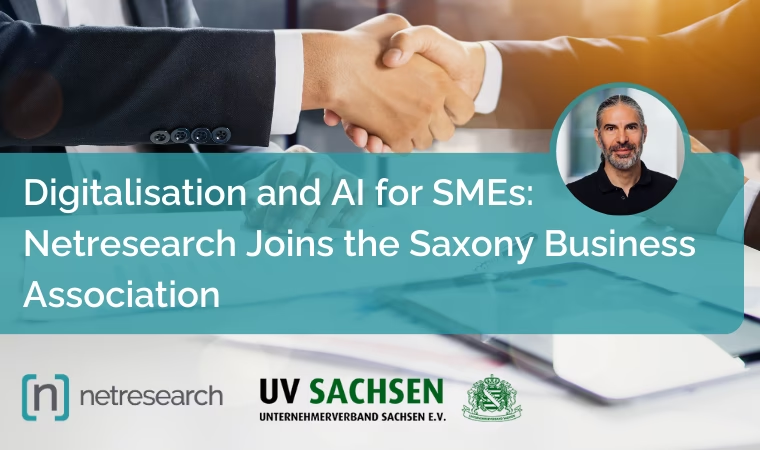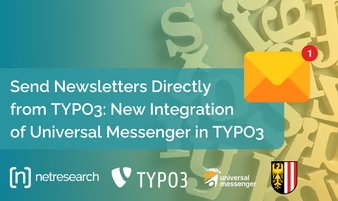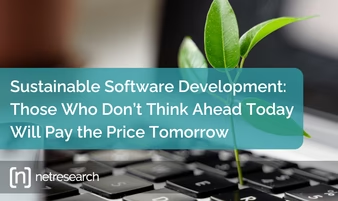Sustainable software development
Sustainability is no longer just an environmental issue - IT is also increasingly focussing on how digital systems can be made more durable, efficient and resource-saving. For us developers at Netresearch, sustainability is not just a buzzword, but an attitude: we want to build software that not only works well today.
With my current certification in the field of sustainable software development, I am not only deepening my own expertise - I am also bringing new impetus to the team to make our projects even more sustainable. Because we believe that sustainability starts in the code - and becomes a strength when it is considered throughout the entire company.
In this article, we take a look at what sustainable software development means in concrete terms, how it affects modern projects - and why it is becoming increasingly relevant for companies in the B2B sector in particular.
What does sustainable software development mean?
Sustainable software development describes an approach in which software is designed to be as efficient, low-maintenance and long-term usable as possible over its entire life cycle - with the lowest possible consumption of energy and resources.
The key principles here are
- Efficient use of resources: clean, high-performance code avoids unnecessary computing power - a direct contribution to reducing energy consumption.
- Longevity & maintainability: Systems are planned in such a way that they function for many years and remain flexibly adaptable - in the spirit of digital longevity.
- Technology awareness: Not every new technology is automatically the most sustainable. Sustainable development also means consciously choosing what is really needed.
- Transparency: Good documentation and clear structures ensure stability across team and project boundaries.
Digital sustainability is not a fashion trend, but increasingly a quality feature of responsible IT projects.
Key principles of sustainable software development
AI & LLMs: harmonising opportunities and responsibility
Artificial intelligence - especially large language models (LLMs) such as GPT or Claude - opens up new possibilities for automation, text processing and user interaction. They can also bring real efficiency gains in many B2B processes. However, such systems are significantly more computationally intensive than traditional software components.
In terms of sustainable development, the question is therefore not "AI - yes or no?", but rather: How can AI be used in a sensible, user-orientated and resource-saving way?
- Targeted use: Instead of integrating AI everywhere, it is worth using it where it brings real added value - e.g. in complex support processes or for the intelligent filtering of information.
- Technical optimisation: load and energy consumption can be significantly reduced by caching, selecting smaller models or combining them with traditional methods.
- Forward-looking solutions: Issues such as hosting, data protection and maintainability are also incorporated into sustainable AI architectures.
The responsible use of AI is now part of a modern, future-orientated IT strategy - and is therefore also part of digital sustainability.
Why sustainable software development is also relevant for companies in the B2B sector
Sustainable software is not only "green" - it is often also the more robust, cost-efficient and future-proof choice. These are decisive factors, especially in the B2B sector:
- Reduce operating costs: efficient software requires less infrastructure, electricity and maintenance - this has a positive impact on the budget and carbon footprint.
- Avoid technical debt: If you develop in a structured and maintenance-friendly way today, you save yourself costly rework tomorrow.
- Keep an eye on regulatory requirements: Whether energy efficiency, data protection or accessibility - sustainable approaches help to fulfil legal requirements and avoid subsequent rework.
- Ensure competitiveness: Companies that also think and act sustainably in the digital sector position themselves as future-orientated and responsible.
Sustainability in practice
Sustainability cannot be reduced to a to-do list - but it can be considered as an attitude in every project phase:
- Planning: Which functions are really necessary? Which technologies are suitable for the company in the long term?
- Development: How can the technical implementation be designed to be as resource-efficient as possible?
- Operation: Which hosting strategies enable low CO₂ emissions? How are updates implemented efficiently?
- Scaling: Can the system be operated sustainably even as it grows?
Such questions not only strengthen the environmental balance - they also increase the robustness and adaptability of digital solutions.
Conclusion
Sustainable software development is not a game for idealists - it is a pragmatic, future-proof way of making digital systems more efficient, robust and resource-efficient.
Those who invest in efficiency, maintainability and intelligent technology integration today will benefit tomorrow from lower operating costs, clearer structures and an IT landscape that grows with requirements - not against them.
Artificial intelligence, cloud systems and modern frameworks can be harmonised with sustainable thinking - if the focus is on substance and benefits.
As developers, it is our responsibility to design systems in such a way that they last - technically, economically and ecologically. As a company, we create the foundations for this: through further training, modern tools and a culture in which quality and responsibility go hand in hand.
For us, sustainability begins in the code - and has an impact far beyond that.
Do you want your software to not only work today - but also survive tomorrow?
Whether it's a new development, modernisation or technology decision: We support you in making your digital systems sustainable, maintainable and future-proof - with technical expertise, foresight and a clear focus on efficiency.
Rely on software with substance.
Let us examine together how sustainable development can be realised in your project.

